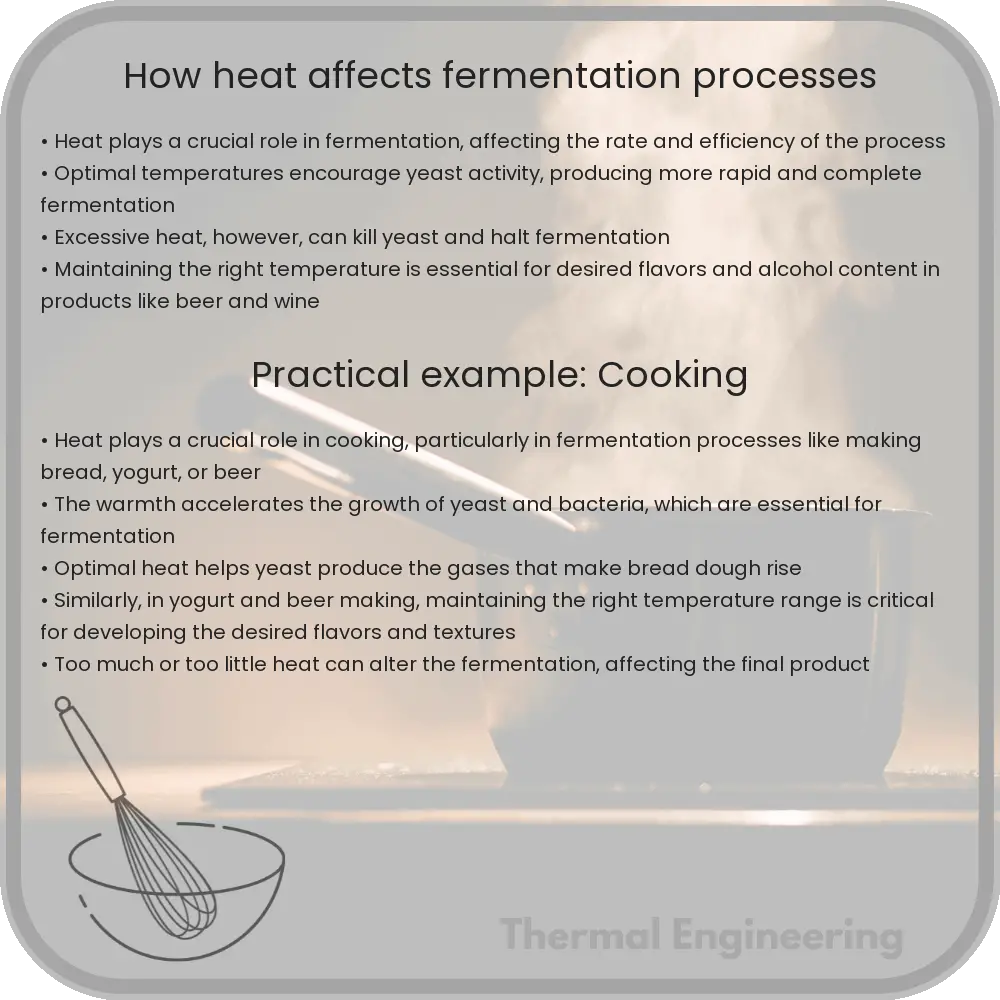Explore the impact of temperature on fermentation efficiency, highlighting optimal ranges and enzyme activity for industrial applications.

Understanding How Heat Affects Fermentation Processes
Fermentation is a critical process in many industries, including food and beverage, pharmaceuticals, and biofuels. Essentially, it involves the conversion of carbohydrates to alcohols and carbon dioxide or organic acids through the action of yeasts or bacteria. The efficiency and rate of fermentation can be significantly influenced by various factors, one of which is temperature. Let’s explore how heat affects fermentation processes and why managing temperature is crucial in these biochemical reactions.
The Role of Temperature in Fermentation
Temperature is a key environmental factor that impacts the rate of fermentation. Each fermenting organism has an optimal temperature range that supports its maximum activity. Deviating from this range can reduce efficiency or even halt the process entirely.
- Optimal Temperature Range: Most yeast fermentations, such as those used in brewing and baking, have an optimal range between 20°C to 30°C (68°F to 86°F). Lactic acid bacteria used in yogurt and cheese production generally prefer slightly higher temperatures, typically around 30°C to 40°C (86°F to 104°F).
- Enzyme Activity: Fermentation is driven by enzymes, which are proteins that facilitate chemical reactions. Temperature affects enzyme activity by altering their structure. Within the optimal range, higher temperatures typically increase the rates of enzyme-catalyzed reactions.
- Thermal Denaturation: At temperatures beyond the optimal range, enzymes and other proteins can denature, losing their structure and function. This can lead to slowed or stopped fermentation processes.
Effects of Heat on Fermentation Kinetics
The kinetics of fermentation describe how the rate of fermentation changes over time and under different conditions. The Arrhenius equation is often used to illustrate the temperature dependence of reaction rates:
k = A * e-Ea/(RT)
- k: Rate constant of the reaction
- A: Frequency factor, representing the number of successful collisions
- Ea: Activation energy of the reaction (energy required to initiate the reaction)
- R: Universal gas constant
- T: Absolute temperature (in Kelvin)
According to this equation, even a small increase in temperature can significantly increase the rate of fermentation, provided the temperature remains within the range that is tolerable to the yeast or bacteria.
Practical Applications and Considerations
In industrial settings, maintaining the right fermentation temperature is crucial for maximizing yield and efficiency. Here are a few practical considerations:
- Temperature Control Systems: Fermenters are often equipped with heating or cooling systems that help maintain a constant temperature. This is crucial not only for optimizing fermentation rates but also for preventing the growth of undesirable microorganisms that could contaminate the product.
- Scaling Up Processes: When scaling up fermentation processes from laboratory to industrial scales, the heat generated by the fermentation itself can significantly affect the temperature. Industrial fermenters must be designed to handle this additional heat load efficiently.
Conclusion
Temperature management is a critical component of optimizing fermentation processes. By understanding and controlling the heat during fermentation, producers can ensure that biochemical processes are conducted efficiently, safely, and with the highest yield possible. This not only improves the quality of the end products but also enhances the economic viability of the fermentation-based industries.
Whether in brewing, dairy productions, or biofuel manufacturing, paying close attention to the thermal aspects of fermentation helps businesses to thrive and produce consistently high-quality results.